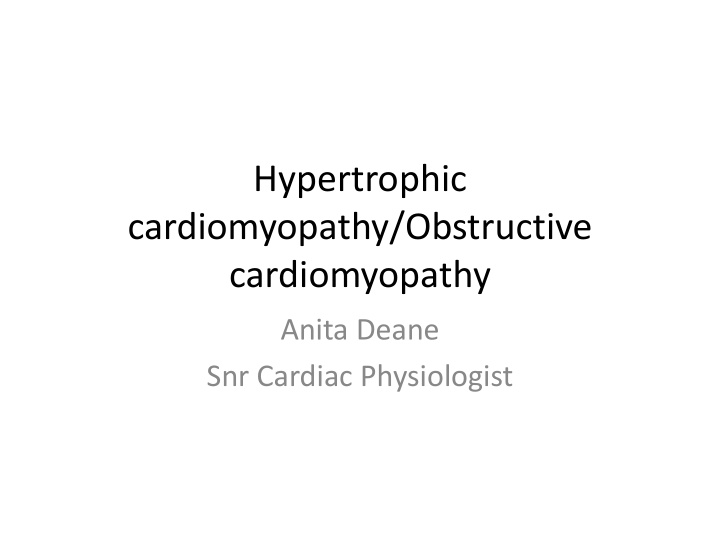



Hypertrophic cardiomyopathy/Obstructive cardiomyopathy Anita Deane Snr Cardiac Physiologist
Apical HCM
Apical HCM
Apical HCM
Lateral/Inferior wall HCM
Lat/Inf wall HCM
HOCM – Hypertrophic obstructive cardiomyopathy
HOCM
HOCM
HOCM
HOCM
HOCM
HOCM
HOCM
HCM prevalence • Common inherited cardiovascular disease. • HCM, 1:500 prevalence in general population. • HCM most common cause of SCD in young people, (<35 years) and athletes. • Autosomal dominant, child has 50% chance of inheritance. • Alterations of MYH7 and MYBPC3 a/c for >80%.
LVOT obstruction Valsalva manoeuvre can alter loading conditions and contractile state of the heart. However, this underestimates gradients compared with exercise, 40% sensitive in predicting exercise induced gradients. Exercise is the most physiological and sensitive method for detecting provocable LVOT obstruction.
Mimics • LVOT obstructive gradient is seen in late systole. • Mitral regurgitation is seen from from early systole.
Other echo features • Elongated MV leaflets sometimes seen • Diastolic dysfunction. • Dilated left atrium. • Over time LV systolic impairment.
Screening/Follow up? Treatment?
Thank you, any questions?
Recommend
More recommend